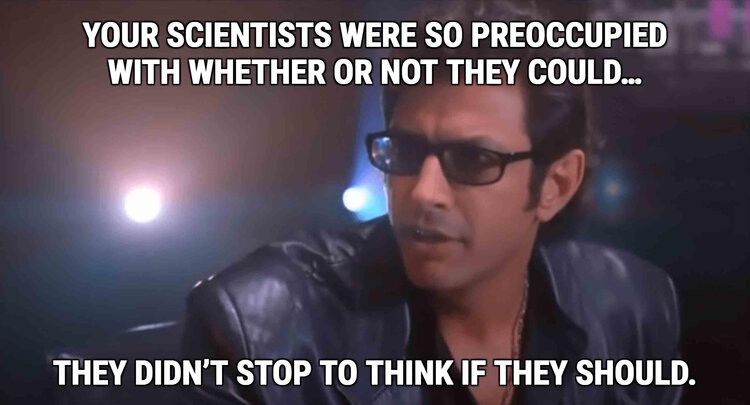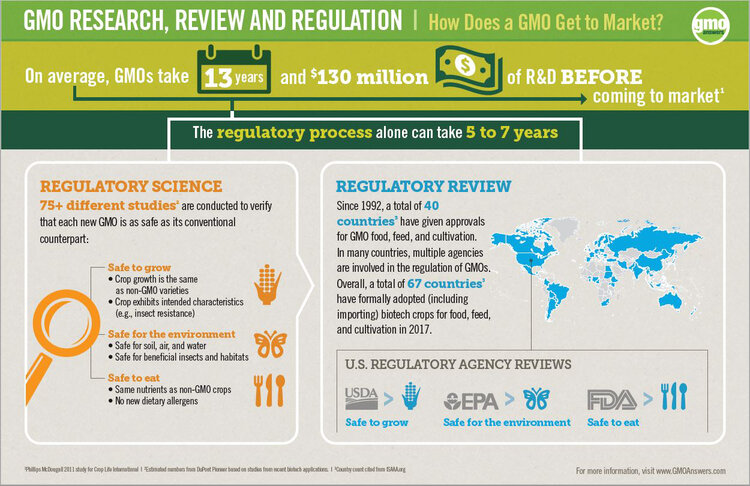
By Amy Curran, Ph.D., Chief Operating Officer, ZeaKal
As ZeaKal’s Chief Operating Officer and Head of Regulatory Affairs, I hope to offer some transparency and clarity into our regulatory process—which can often seem complex. I will discuss the drivers of GMO policies to help consumers better understand the global framework around GMO products.
Genetically modified (GM) crops have been on the market for over 30 years. These crops have more data around their safety, environmental impact, and composition than any other food product. With millions of acres planted annually, the scientific community concedes that GM crops are safe and beneficial for the environment. The National Academy of Sciences repeatedly published reports (1987, 2010, 2016) that underscore the safety and potential of GM technologies to positively impact human health, food security, and sustainability.
However, despite the clear scientific consensus, consumers continue to be wary of GMOs. A key factor is the fragmented regulations dictating the cultivation, import, and labelling of these products. For consumers, contradicting GMO policies send mixed signals and sow seeds of doubt regarding the safety, standards, and processes used to evaluate GM products.
Brief History of GMO regulation in the U.S.
As my colleague, Dr. Greg Bryan (ZeaKal CTO) discussed in Part 1 of this series, GMOs naturally occur. They have been part of our food system since the beginning of crop cultivation.
However, when the 1970s introduced the concept that “genes could be moved across species”, it was breakthrough science. A world-wide moratorium on GM experimentation emerged in response to this unprecedented innovation so that its impact and safety could be better assessed. In 1975, scientists (including our late Chairman, Dr. Jerry Caulder), physicians and policy makers gathered at Asilomar (what would be later known as the Asilomar Conference) to discuss guidelines and how to manage risks for biotechnology. Unlike the scientists from Jurassic Park, scientists in the real world debated the responsible approach forward for GM technologies.

Over a decade later in the 1980s, the first GMO policies and regulatory frameworks began to oversee so-called “biotechnology” products. The U.S. created the Coordinated Framework for Regulation (CFR) of Biotechnology to govern the introduction of GM crops. Due to its complexity, oversight authority split among three different agencies: the United States Department of Agriculture (USDA), the Environmental Protection Agency (EPA) and the Food and Drug Administration (FDA).
The CFR framework is still used today, although it evolved alongside the data and underlying science. As recently as 2020, USDA updated its framework to regulate bioengineered crops with a more science-based approach given all the tools that did not exist three decades ago.
As a real world example, I will provide an overview of ZeaKal’s current regulatory journey. PhotoSeed is a two gene GM trait that enhances photosynthesis and improves oil and protein content in seeds. The product aligns with the company’s values of creating a more nutritious, sustainable crop with higher carbon capture.
To date, we conducted multi-year field trials across different locations looking at how the crop performs, analyzing changes in its composition while recording any environmental or non-target organism effects. Our seeds go through in-depth analyses looking at changes in the genetics. Further analysis looks for minerals, sugars, isoflavones, and allergens. Next, appropriate regulatory bodies receive the data for regulatory clearance. Like other GM products, the amount of investment, analysis, and testing far exceed other products on the market.
Genetically Modified (GM) technologies in our lives
GM technologies now touch every part of our life far beyond what immediately comes to mind when we hear the term GMO. GM technologies have transformed human health, nutrition, and animal welfare. It allows us to produce insulin in a more humane way (in microbes rather than animals). A similar and more delicious example: many cheeses in the world are GMO. Rennet, the coagulant used in hard cheeses, was traditionally harvested from the stomach lining of calves. Now, they are produced recombinantly in microbes as well. Living in Hawaii, for me the benefits of GM are local and personal. Hawaii’s papaya industry would not exist if not for the GM rainbow papaya. Developed by local university researchers, the gene conferred resistance to the papaya ringspot virus.

The science of GMO policies and the policies of GM science
All the above examples highlight how GM technologies benefit our lives. They underscore how policy and science are not one and the same. For example, although Hawaii at one point had anti-GMO legislation in place, the adoption of the Rainbow papaya ensured the survival of the industry. Europe’s cheese industry would not be possible without GM rennet, yet they almost completely banned the cultivation of GM crops. If policies around the cultivation, consumption and labelling of GM had grounds in safety, then there should be no exemptions.
Like all GMO policy decisions, the science is only one component. It cannot be separate from the economic, social, and political considerations. Problematic issues arise when policy masquerades as science. This lack of distinction leads to the inadvertent or worse intentional promotion of misinformation. Specifically it can result in:
1. Hindrance of Other Policy Goals
Policy wise, there is a global consensus that the world needs better food on a smaller environmental footprint. Several technologies that further environmental sustainability, such as drought tolerance, fall into the GMO or bio-engineered category. The current regulatory barriers greatly jeopardize the possibility that these technologies can make a difference in the world.
As an example, despite having some of the most aggressive goals to reduce emissions, GMO policies around agriculture in the European Union often take away important tools from regional farmers to meet these goals. Europe, despite not allowing for GMO cultivation, imports 30 million tons of soybean products per year (90% of which contain a GM trait). In effect, geographies that limit GM cultivation, but import GM crops, outsource their “perceived risks” overseas. Without critical technologies and the reliance on GM imports, Europe’s food system would not be viable.
2. Influence Over Policies of Other Nations
The domestic regulatory GMO policies of countries have significant ramifications beyond their borders. Non-tariff trade barriers delay the commercialization of new products and detrimentally influence the policies of other countries.
In affluent countries, most people do not rely on agriculture for their livelihood. However, in certain economies, GM technologies could alleviate poverty, protect domestic crops from disease, and even address public health crises.
For example, in the 20 years it took to get approval of Golden Rice (which is beta carotene enriched), millions of additional cases of blindness and death occurred throughout Asia. Part of the delay owes to burdensome regulatory requirements and open hostility to GM’s development. Following the leadership and anti-GMO policies of certain affluent nations, leaders in developing countries prevented critical technologies from being available to their citizens (Golden Rice: The Imperiled Birth of a GMO Superfood, Ed Regis, 2019).
3. Erosion of Long Term Institutions
While policy can change overnight, innovation and the people and institutions that support it cannot. Despite the widespread adoption of GM crops and their benefit, we see the effects of a prolonged campaign against the technology. Given the time and cost of commercializing GM technologies, the ability to innovate resides in the hands of a few large companies. That research is also becoming narrower due to investor pressure.
At the other end of the innovation life cycle is an erosion of science funding at the basic research level. Both private and government agency investors identify regulatory uncertainty as a major investment risk. With the global call to action for agriculture to be more productive, resilient and sustainable, our pipelines are alarmingly ill-equipped meeting this challenge.
Is the system we have the system we deserve?
When policy works in harmony with science and stakeholders, it can promote change. As seen in the fight against COVID-19, governments, corporations, and researchers globally rallied behind science to enable the rapid development of safe and efficacious treatments. A similar concerted effort can meet the looming challenge of sustainable food security.
Now is the time to overturn decades of prejudice against GMOs to create a better future. If our goal is to promote a more sustainable future that can improve nutrition and alleviate poverty, we should all aim for a more rational and friendlier relationship with GMOs.


